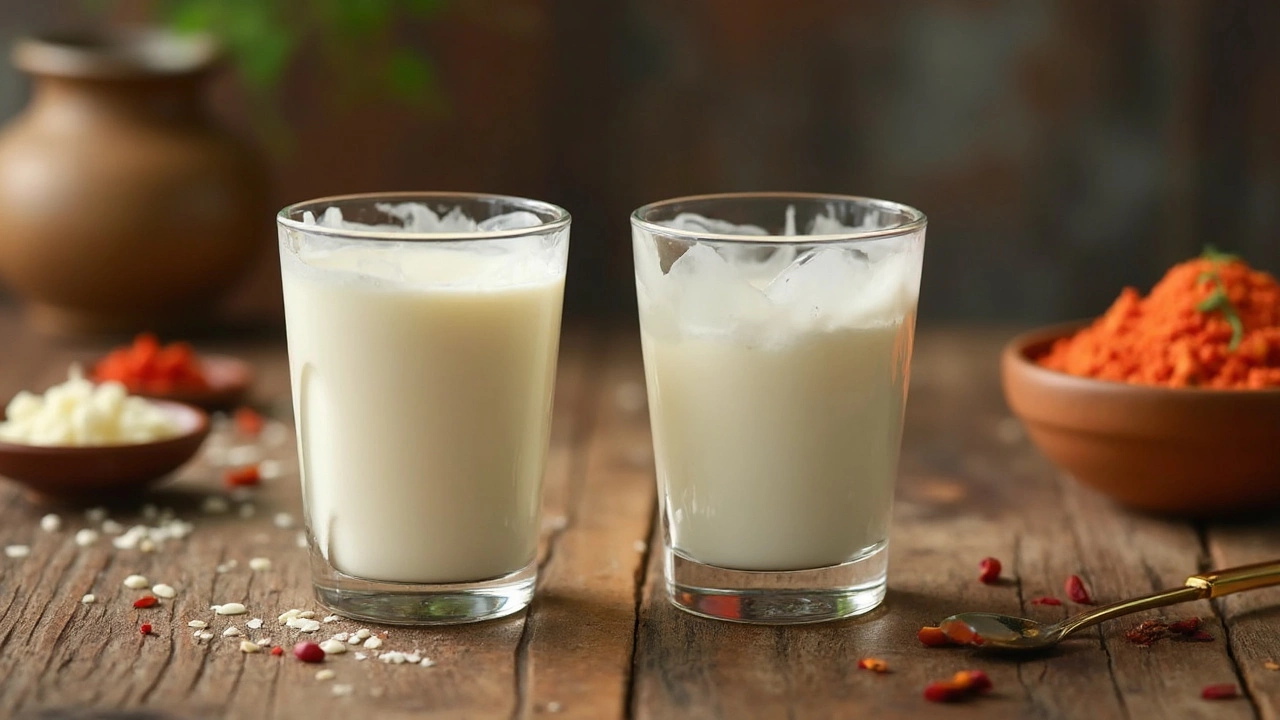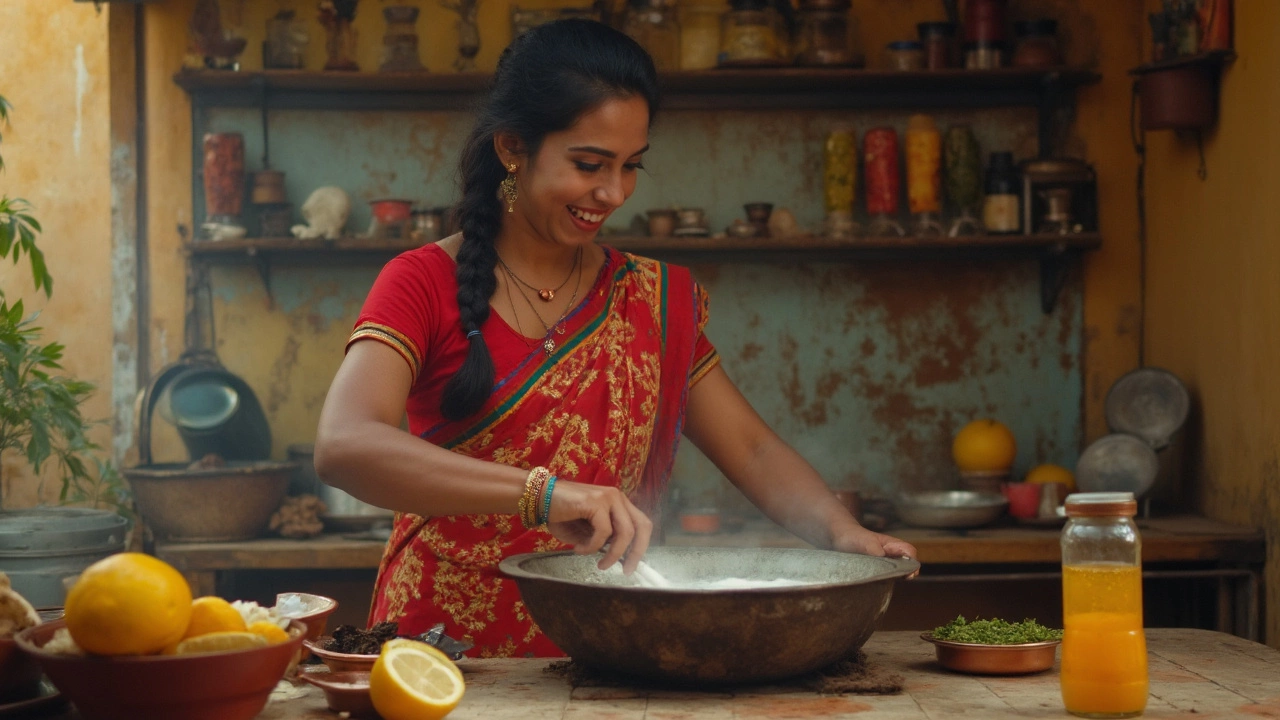Ever wondered if curdled milk is just spoiled milk in disguise? You’re not alone. Many of us have peeked into the fridge, seen lumpy milk, and thought, 'Uh oh, is that still good?' Let's break it down.
Curdled milk and spoiled milk might look similar, but they’re worlds apart in the kitchen. Curdling is when milk proteins, like casein, separate under certain conditions—like adding an acid or heat. It's a controlled process often used in making yummy stuff like paneer. Spoiled milk, on the other hand, is a whole different story. It smells funky and is a sign that bacteria have had a party in your milk.
Understanding these differences not only keeps you from making culinary mistakes but also keeps your tummy safe. Let's explore how you can embrace curdled milk, transform it into delightful cheese, and avoid the perils of spoiled milk.
- What Makes Milk Curdle?
- Spoiled Milk: Signs and Risks
- Making Paneer at Home
- Useful Tips for Milk Handling
What Makes Milk Curdle?
Curdling might sound like a bad thing at first, but it's actually a pretty neat trick in the kitchen, especially when you're thinking about making that homemade paneer. So, what makes milk curdle? Well, it's all about proteins and reactions with acids.
Nature of Milk Proteins
Milk is packed with proteins, mainly casein and whey. Normally, these proteins are suspended in water, giving milk that smooth texture we’re used to. But when you add an acid like lemon juice or vinegar, the casein proteins start to clump together. This is the magic moment when milk begins to curdle.
Role of Acidity and Temperature
Acidity is a major player in curdling. When you squeeze some lemon or pour vinegar into milk, the pH level drops. Proteins lose their charge, stop repelling each other, and instead stick together. Heat speeds up this process, so warming milk before adding acid can help thing along. That's why most paneer recipes call for bringing milk to a near-boil before adding the acid.
If you’re a bit of a science fan, here’s a cool fact: fresh milk sits at a neutral pH of about 6.7. When you add an acid, this number drops below 4.6, and boom! Curdling begins.
Using Curdled Milk for Good
Don’t chuck that curdled milk unless it smells bad! Using it for cooking is a great way to transform it into delicious foods like paneer. Even buttermilk gets its tangy taste from a controlled curdling process.
| Action | Outcome |
|---|---|
| Add Acid to Milk | Curdles, making it great for paneer |
| Heat Milk | Speeds up curdling |
So next time you see milk starting to curdle, think twice before discarding it—there could be a delicious paneer dish in your future!
Spoiled Milk: Signs and Risks
At some point, we've all been greeted by a suspiciously tangy aroma when opening a milk carton. But what really are the signs of spoiled milk? Spoiled milk doesn’t just look bad; it smells awful and can potentially make you sick.
Signs to Watch For
- Off-putting Odor: Fresh milk smells mild and sweet. Spoiled milk, however, has a sour, sometimes almost metallic smell.
- Changes in Texture: Instead of being smooth, spoiled milk often gets lumpy or curdled, even without adding any acids.
- Color Changes: If your milk has developed any yellow or bluish hues, it's a signal that you should not drink it.
The Risks Involved
Drinking spoiled milk is not just a matter of unpleasant taste; it can actually lead to foodborne illnesses. Symptoms might include stomach pains, vomiting, and diarrhea. Not fun, right?
Bacteria are key players here. As milk ages past its sell-by date, bacteria like Lactobacillus and Streptococcus multiply, breaking down the lactose in milk. This shift not only changes the taste and smell but also ramps up the chances of stomach issues.
Is It Ever Safe?
While drinking spoiled milk is a no-go, using it in certain cooking methods could be okay. For instance, some folks use slightly spoiled milk in baking, where heat gets rid of harmful bacteria, or even certain types of cheese-making. But it’s wise to err on the side of caution.
Understanding these signs and risks keeps you safe and ensures that potentially risky spoiled milk stays out of your recipes and your stomach.

Making Paneer at Home
Making paneer at home with curdled milk is simpler than you might think. First, let’s chat about why curdled milk is your friend here. Curdling the milk is a key step in giving paneer its soft and spongy texture, making it a popular choice in Indian kitchens.
Spoiled milk, however, is off the menu. It's best to use fresh milk that has naturally curdled or is curdled intentionally with lemon juice or vinegar. According to food expert Anjali Pathak, "The right curdling method is crucial to achieving that perfect paneer consistency."
What You'll Need
- 1 gallon of whole milk
- 1/2 cup of fresh lemon juice or white vinegar
- Cheesecloth or a clean muslin cloth
- Large pot
- Strainer
Step-by-Step Instructions
- Bring the Milk to a Simmer: Pour the milk into a large pot and heat on medium. Stir occasionally to prevent scorching.
- Add the Acid: Once the milk begins to simmer, slowly add the lemon juice or vinegar while stirring gently. Watch as the milk curdles, turning into a cloudy mixture.
- Let It Settle: When the curds and whey separate distinctly, remove the pot from the heat and let it sit for a few minutes.
- Strain the Curds: Line a strainer with cheesecloth and pour the mixture through. Rinse with cold water to remove any lingering acidic flavor.
- Wrap and Press: Gather the cheesecloth with the curds, twist it to squeeze out excess whey, and press under a heavy object for 30 minutes to set.
- Unwrap and Store: Once formed, unwrap your homemade paneer and store it in the fridge or use it right away in your favorite dishes.
See? It’s not rocket science. Plus, making homemade paneer saves money, avoids preservatives, and provides that fresh taste you can't get from store-bought versions.
Pro Tips
- For softer paneer, shorten pressing time; for firmer paneer, extend it.
- If you're aiming for a more consistent taste, lemon juice is usually preferred over vinegar.
Useful Tips for Milk Handling
Proper milk handling can make a massive difference in its shelf life and usability, especially when you're interested in making homemade paneer. Let's dive into some practical tips to keep your milk fresh and avoid it turning into spoiled milk.
Storage is Key
The fridge is your milk's best friend. Always store milk at a consistent temperature of about 37°F to 40°F (3°C to 4°C). Keep it at the back of the shelf rather than the door for a more stable temperature. This helps in preventing milk from spoiling too soon.
Use Clean Containers
When you pour milk out, make sure the container you’re pouring into is clean. Anything leftover in a not-so-clean container can easily contaminate your milk, accelerating spoilage.
First In, First Out Principle
It's a great idea to use the oldest milk first. Label your milk containers with the date of purchase so you know which ones to use up first. This principle helps reduce waste and ensures you’re always using fresh milk.
Mind That Expiry Date
Always check the expiry date before using milk. If you've opened it, it's generally good for about 5-7 days, but always give it a whiff first. If it smells off, steer clear.
Don’t Leave Milk Out
Leaving milk out at room temperature is an open invitation for bacteria to come mingling. Try not to leave it out of the fridge for more than two hours at a time.
| Temperature | Effect |
|---|---|
| Above 40°F | Increases risk of spoilage |
| Below 37°F | Might freeze milk |
Follow these simple tips and you'll have fresher milk that's ready to become whatever delight you plan. Ready to turn that curdled milk into something amazing like paneer? It all starts with proper milk care!
